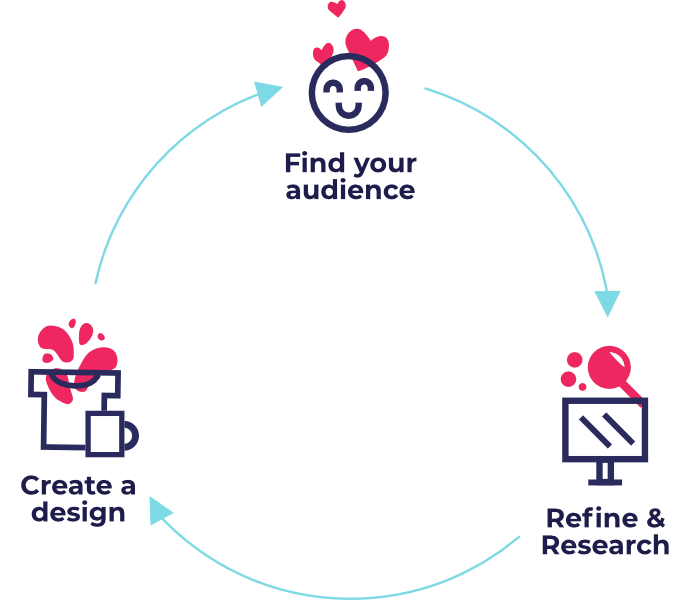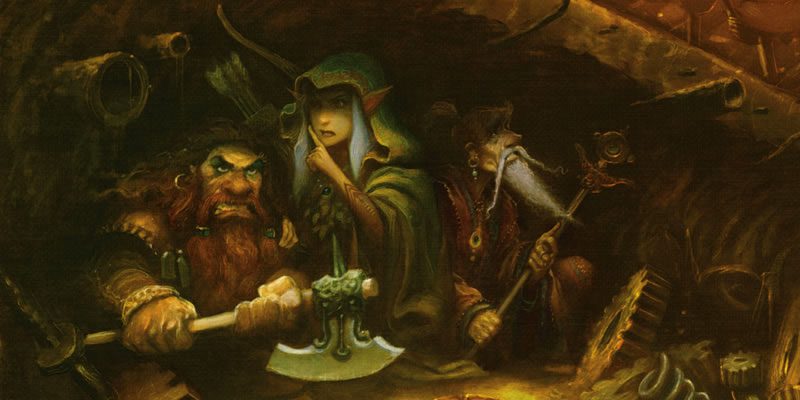Craft of the game: Creating a Minimum Viable Product

Tabletop gaming is filled with excellent ideas, but what happens when you have an idea that you want to share with others? The first step in doing so is creating a “minimum viable product.” At its core, a minimum viable product for tabletop RPG gaming is a stripped-down version of the product. To do so, you’ll need to determine who your audience is, ask yourself what problem you’re solving, examine other games on the market, create a user flowchart, brainstorm vital features, giveaway samples for test play, ask for and listen to feedback, and iterate.
Determine who your audience is. Are you creating a new class for an existing game? Are you creating an entirely new game? Whatever you’re creating, you’re going to want to be as specific as possible for your product. Here’s a short (but by no means comprehensive) list of audiences. Please note some of these audiences may overlap to some degree:
- Kickstarter/ crowdfunder funders
- Science fiction geeks
- People interested in high fantasy
- Fans of historical fiction
- Card game enthusiasts
- Those who play board games
- Video game aficionados
- Movie or comic book junkies

Ask yourself what problem you’re solving. Ask yourself why this product? Why not another? How does it help the gaming sphere? Does it provide interesting characters, unique plot, setting, or gameplay mechanics than other games, different equipment than other games out there? If you’re designing an archetype (subclass for the older versions) or entirely new class for a game (such as D&D), do they have unique or different abilities than currently existing classes or archetypes out there?
Look at what other games are out there by looking at their web and social media pages. If you can find them in a gaming or other type of hobby shop, look at how their displays look, pricing of their product(s), and find out how others find out about them. The more you can find out about your competition, the better.
Without knowing what your competition is, you won’t be able to accurately determine how your product is the same or different from the other games on the market. If your game is too similar, why should players invest in it, or even choose it over your competitors? Knowing what your competitors have done will also help you avoid what the mistakes they made in the past and perhaps even build upon their successes. With all this information, figure out how to differentiate yourself from your competitors.
Create a user flowchart, which is a step-by-step visual representation that shows how the user needs to do to complete a specific task. Doing this step will help game designers to improve the user experience (UX) of their customers by streamlining user interface (UI). While the concepts of UX and UI are normally reserved for web design, these concepts are equally as crucial for tabletop RPG games because a good layout for the game’s materials can make or break a game. Similar to the materials themselves, the character sheet, card layout(s) (for a card game), options menu (for a computer program), etc. can allow your game to shine or cause it to flop spectacularly. The better the UX and UIs for your game, system, etc. are, the better chance you have of getting and creating a loyal following.
Brainstorm how your product’s fundamental features and prioritize them. Doing so with friends, family, and/or your development team is a great way to generate new ideas, hash out potential solutions for existing problems. Unfortunately, those doing it can often get off-topic and waste time and resources. Using brainstorming tools or templates helps avoid these pitfalls. Three accessible models to use are:
- Timelines: Loosely fill in dates or months and have those in the brainstorming session discuss what they want to get done in each time frame, to move onto the next section. Once done, you will have created a high-level rough product roadmap. Note: some things might need to overlap. An excellent visual tool to do this is MS Project or similar software, though it will require you to use actual dates.
- Free Form Maps start with a blank canvas – a sheet of paper, a whiteboard, chalkboard, etc. There are even programs that allow you to do similar things if all people aren’t able to be in the same location. One person is designated to record what’s being said and connecting the ideas. They write words or ideas as those in the session are throwing them out. A useful tip to constrain the meeting is to have a centralized idea and have everything else branch out from there. As the ideas come, some may float to the top as being just as essential or perhaps even more so than the initial thought, putting related ideas next to or under one another. This is where an erasable surface or program might come in handy. Instead of drawing lines all over the place, the words and ideas can be moved around or changed as connections and hierarchies become apparent.
- Create one (or more) blank cycles and have the brainstorming session fill them in. When done, you’ll have the different sections of it/ them until you have completed the framework for a repeatable process.
Giveaway samples for test play. Just because you know how the game is supposed to run, doesn’t mean that it’s idiot-proof. By giving it to others, you can see what their experiences are and adjust accordingly. If they’re not having fun, finding the rules easy to use, or characters easy to build you need to ask yourself why. You may even end up having to go back to the drawing board.
Ask for and listen to customer feedback. When designing a tabletop product, whether it’s a new character class, an entirely new system, a card or video game, or a unique setting, it’s vital to incorporate your user’s feedback into the building process. Nowadays, customers who funded the product on Kickstarter are the ones ordering it. The reason you are building this product is to serve the gaming community, so hear them out and tailor new features or updates to their needs.
Some excellent ways to get customer feedback on roleplaying products are as follows:
- Create an online forum or community on your website, a fundraising site like Kickstarter, or social network sites can generate excellent feedback and engagement. Moderation for these is crucial. Their job is to start new and moderate discussions, posting and regularly updating, responding to feedback, etc. Doing so increases user engagement and strengthens relationships with the customer. It can also provide some excellent feedback and new ideas. Some useful tools are Get Satisfaction, and UserVoice help build communities and facilitate discussion between customers and businesses. You can even encourage and incentivize users to share their experiences or even pictures and videos.
- Offer email surveys from such sites as SurveyMonkey or Survey Anyplace.
- Polls can be an effective way of seeking feedback due to their user-friendliness. Some places you might conduct them are your website, via newsletter, social media, or through emails. Polldaddy is one such site available for this purpose. Polls play an can help you make product decisions, especially in the beginning stages of creation. Questions should be multiple-choice and should be kept as brief as possible. Along with multiple-choice questions, it’s vital to have a general text box for other comments. This feedback can be a useful source of information and play a critical role in improving your product’s usability.
- Social Media Channels such as Facebook, Twitter, LinkedIn, etc. can be invaluable resources for customer feedback. There are a variety of tools that can help with monitoring or “Listening in” to these sites. Some even help monitor your competitor’s social presence. Listening in to social media provides an awesome opportunity to respond quickly to any issues that might arise. Timing is crucial in handling complaints on such platforms, as negative comments spread rapidly. Social media, it makes it imperative that the issues are addressed promptly, and try to ease the customer’s anger. Social listening requires dedicated resources to monitor and respond to feedback. Many companies use a combination of in-house and third-party staff, along with a variety of tools such as HootSuite, Klout, Social Mention, etc.
- Monitor Feedback on Other Sites such as online communities, blogs, local listings, etc. If your customers are not happy with the resolution to a negative experience, they are likely to vent their frustration on these forums. Examples of tools include Trackur, Yext, and Google Alerts, all of which track different things. Being that the topic at hand is tabletop RPG games, you might want to monitor us here at tribality or Rpg.net.
Iterate. Iterate. Iterate. Once you have the feedback from your customers, make needed changes and send out for test play again. It may take several iterations to get a product that is market-ready, easy to use, fun, and worth the customer’s money.
Designing your own product is a fun and rewarding experience, but no one ever said there wouldn’t be bumps along the way. By using these suggestions to make a minimum viable product, you should be able to remove some of the guesswork out of the process.



